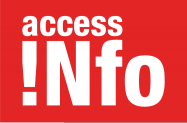Ensuring that such information is collected is also an essential part of government obligations to ensure a diverse and plural media environment, an obligation which stems from the right to freedom of expression and information. In many countries, the legal framework already establishes obligations on government to collect information in order to ensure such diversity and to guard against excessive concentration of ownership. What is being called for here is to ensure that such information is also made publicly available, on the understanding that such public availability of accurate, comprehensive, and up-to-date data on media ownership is an essential component of a democratic media system.
The Information collected is insufficient to determine ownership – not all countries collect beneficial ownership information for instance;
The level of transparency that is possible using corporate law is generally very low across Europe – and much lower than transparency via a media regulator which would make pursuing this option a much bigger ask.
The information collected is not available to the public (either not at all or only record by record pursuant to payment of a fee) and even where the public does have access to such information it is not easy to pull out all the media companies from the company register due to limited search functions. To find out via a company register who owns a particular media outlet, first one has to know the name of the company that runs the TV channel, newspaper etc. For example, if I want to know who owns Pick TV and do a search in Companies House, I find nothing (of course). If I use a media-specific registry – MAVISE – I can immediately find out it is owned by BskyB and take my investigations further.
There are insufficient attempts to verify the information collected, and media-related bodies which in theory should be working to promote plurality and diversity often do not make sure of the data in company registers in a systematic way;
Even if company law required beneficial ownership to be disclosed and it was publicly accessible, it would be unlikely that company law would require disclosure of certain pieces of information that are needed for full transparency of the media, for example, interests in other media companies, religious/political affiliation, family affiliation.
Although some of our countries surveyed do have some low thresholds in their company law (3%, for example), most have thresholds that are far too high for transparency – even the new UK proposals on disclosure of beneficial owners proposes 25% as the minimum threshold. Why would company regulators want to introduce provisions that are more restrictive just to suit media transparency when the media will constitute a tiny proportion of registered companies?
Current practice across Europe would indicate that there is already widespread acceptance that the media should be subject to more stringent reporting requirements than other companies. In all the countries we surveyed, some media (usually broadcast) are subject to more stringent reporting requirements than other companies. In 10 of those countries, print media are required to submit information to a media authority, with the level of disclosure being quite detailed in a handful of them (in a few cases revealing ownership according to our minimum standards).
So whilst company registers play an important role in the regulation of the business sector in general, they have proven insufficient to ensure that the public is able to know who is really behind any given media outlet.
